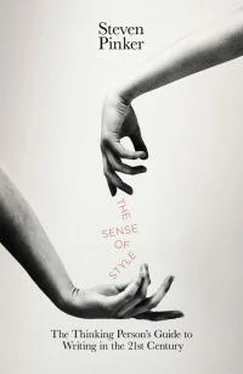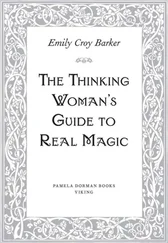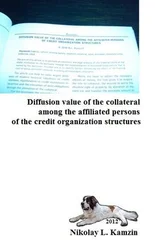If the Buyer is behind in making payments, the Seller may:
Hire an attorney to collect the money.
Charge the Buyer for the attorney’s fees.
If the outstanding balance is prepaid in full, the unearned finance charge will be refunded.
If I pay the whole amount before the due date, you will refund the unearned portion of the finance charge.
The Buyer is obligated to make all payments hereunder.
I will make all payments as they become due.
Membership fees paid prior to the opening of the club will be placed in trust.
If I pay membership fees before the club opens, the club will put the money in a trust account.
23
A concrete and conversational style does more than make professional verbiage easier to read; it can be a matter of life and death. Take this warning sticker on a portable generator:
Mild Exposure to CO can result in accumulated damage over time.
Extreme Exposure to CO may rapidly be fatal without producing significant warning symptoms.
Infants, children, older adults, and people with health conditions are more easily affected by Carbon Monoxide and their symptoms are more severe.
It’s in the third person, and filled with zombie nouns like Extreme Exposure and passives like are more easily affected. People can read it and not get the feeling that anything terrible will happen. Perhaps as a result, every year more than a hundred Americans inadvertently turn their homes into gas chambers and execute themselves and their families by running generators and combustion heaters indoors. Much better is this sticker found on a recent model:
Using a generator indoors CAN KILL YOU IN MINUTES.
Generator exhaust contains carbon monoxide. This is a poison you cannot see or smell.
NEVER use inside a home or garage, EVEN IF doors and windows are open.
Only use OUTSIDE and far away from windows, doors, and vents.
In this sticker a concrete verb in the active voice and the use of the second person narrate a concrete event: if you do this, it can kill you. And what is intended as a warning is expressed in the imperative ( Never use inside ), just as one would do in a conversation, rather than as an impersonal generalization ( Mild Exposure can result in damage ).
The advice to bring zombie nouns back to life as verbs and to convert passives into actives is ubiquitous in style guides and plain language laws. For the reasons we’ve just seen, it’s often good advice. But it’s good advice only when a writer or an editor understands why it’s being offered. No English construction could have survived in the language for a millennium and a half unless it had continued to serve some purpose, and that includes passives and nominalizations. They may be overused, and often they are badly used, but that does not mean they should not be used at all. Nominalizations, as we will see in chapter 5, can be useful in connecting a sentence to those that came before, keeping the passage coherent. The passive voice, too, has several uses in English. One of them (I’ll take up the others in chapters 4 and 5) is indispensable to classic style: the passive allows the writer to direct the reader’s gaze, like a cinematographer choosing the best camera angle.
Often a writer needs to steer the reader’s attention away from the agent of an action. The passive allows him to do so because the agent can be left unmentioned, which is impossible in the active voice. You can say Pooh ate the honey (active voice, actor mentioned), The honey was eaten by Pooh (passive voice, actor mentioned), or The honey was eaten (passive voice, actor unmentioned)—but not Ate the honey (active voice, actor unmentioned). Sometimes the omission is ethically questionable, as when the sidestepping politician admits only that “mistakes were made,” omitting the phrase with by that would identify who made those mistakes. But sometimes the ability to omit an agent comes in handy because the minor characters in the story are a distraction. As the linguist Geoffrey Pullum has noted, there is nothing wrong with a news report that uses the passive voice to say, “Helicopters were flown in to put out the fires.” 24The reader does not need to be informed that a guy named Bob was flying one of the helicopters.
Even when both the actor and the target of an action are visible in the scene, the choice of the active or passive voice allows the writer to keep the reader focused on one of those characters before pointing out an interesting fact involving that character. That’s because the reader’s attention usually starts out on the entity named by the subject of the sentence. Actives and passives differ in which character gets to be the subject, and hence which starts out in the reader’s mental spotlight. An active construction trains the reader’s gaze on someone who is doing something: See that lady with the shopping bag? She’s pelting a mime with zucchini. The passive trains the reader’s gaze on someone who’s having something done to him: See that mime? He’s being pelted with zucchini by the lady with the shopping bag . Using the wrong voice can make the reader crane back and forth like a spectator at a tennis match: See that lady with the shopping bag? A mime is being pelted with zucchini by her .
The problem with the passives that bog down bureaucratic and academic prose is that they are not selected with these purposes in mind. They are symptoms of absent-mindedness in a writer who has forgotten that he should be staging an event for the reader. He knows how the story turned out, so he just describes the outcome (something was done). But the reader, with no agent in sight, has no way to visualize the event being moved forward by its instigator. She is forced to imagine an effect without a cause, which is as hard to visualize as Lewis Carroll’s grin without a cat.
In this chapter I have tried to call your attention to many of the writerly habits that result in soggy prose: metadiscourse, signposting, hedging, apologizing, professional narcissism, clichés, mixed metaphors, metaconcepts, zombie nouns, and unnecessary passives. Writers who want to invigorate their prose could try to memorize that list of don’ts. But it’s better to keep in mind the guiding metaphor of classic style: a writer, in conversation with a reader, directs the reader’s gaze to something in the world. Each of the don’ts corresponds to a way in which a writer can stray from this scenario.
Classic style is not the only way to write. But it’s an ideal that can pull writers away from many of their worst habits, and it works particularly well because it makes the unnatural act of writing seem like two of our most natural acts: talking and seeing.

Chapter 3
The Curse of Knowledge
THE MAIN CAUSE OF INCOMPREHENSIBLE PROSE IS THE DIFFICULTY OF IMAGINING WHAT IT’S LIKE FOR SOMEONE ELSE NOT TO KNOW SOMETHING THAT YOU KNOW
Why is so much writing so hard to understand? Why must a typical reader struggle to follow an academic article, the fine print on a tax return, or the instructions for setting up a wireless home network?
The most popular explanation I hear is the one captured in this cartoon:

Good start. Needs more gibberish.
According to this theory, opaque prose is a deliberate choice. Bureaucrats and business managers insist on gibberish to cover their anatomy. Plaid-clad tech writers get their revenge on the jocks who kicked sand in their faces and the girls who turned them down for dates. Pseudo-intellectuals spout obscure verbiage to hide the fact that they have nothing to say. Academics in the softer fields dress up the trivial and obvious with the trappings of scientific sophistication, hoping to bamboozle their audiences with highfalutin gobbledygook. Here is Calvin explaining the principle to Hobbes:
Читать дальше














